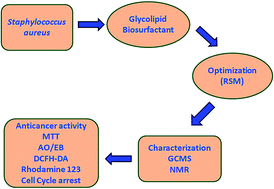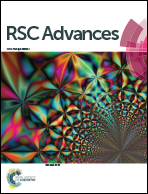Development of glycolipid biosurfactant for inducing apoptosis in HeLa cells
Abstract
A novel glycolipid biosurfactant produced from Staphylococcus aureus was used to induce apoptosis in HeLa cells. The production of the biosurfactant was optimized using different carbon and nitrogen sources. Sucrose and sodium nitrate were found to be the best substrates among the tested carbon and nitrogen sources, which showed a high growth, yield and emulsification activity. The produced biosurfactant was characterized using GC-MS analysis and the results showed the presence of palmitoleic acid, oleic acid, 1,2-benzenedicarboxylic acid and linoleic acid, confirming that the biosurfactant was glycerol derived in nature. FTIR results confirmed the presence of sugar residues and an α-pyranose form of glucose residues, and 1H NMR analysis showed the presence of a glycerol moiety with signals at 3.5 ppm for the –CH2 groups and 3.8 ppm for the –CH groups. We found that this glycolipid induced a significant reduction in the HeLa cell viability in a dose dependent manner. This was further confirmed through AO/EB and DCFH-DA staining, which revealed that the glycolipids were actively involved in the induction of apoptosis in HeLa cells. Moreover, after 24 h of exposure the glycolipids induce S phase and G2/M cell cycle arrest in HeLa cells.


 Please wait while we load your content...
Please wait while we load your content...